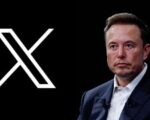Intel Faces Significant Revenue Decline as Chipmaker Struggles to Recover

Intel is poised to report its most significant quarterly revenue decline in over a year, with projections indicating an 8% drop, which would bring its earnings to approximately $13.02 billion. This downturn highlights ongoing struggles within the company, particularly in its data center and personal computer sectors, where market share continues to slip. After years of dominance in the semiconductor industry, Intel’s inability to adapt to changing market conditions and technological trends is now casting a shadow over its future prospects.
A key area of concern for shareholders is the performance of Intel’s contract manufacturing business, which has been underperforming, further straining the company’s financial health. In addition, Intel has failed to capitalize on the explosive growth of generative AI, a sector where competitors have thrived by providing specialized chips for machine learning and other AI-driven applications. Intel’s missed opportunity to invest in OpenAI, one of the leading players in the AI revolution, has only added to investor concerns about the company’s strategic direction.
CEO Pat Gelsinger, who took the helm at Intel with a promise to restore the company’s market leadership, now faces heightened pressure as losses continue to mount. Shareholders are increasingly focused on his plans to address Intel’s ongoing struggles, particularly with respect to its next-generation manufacturing technology. Gelsinger’s ability to turn things around hinges on Intel’s capacity to innovate and roll out new chips that can compete with the likes of AMD and Nvidia, who have both gained ground in the data center and AI markets.
As Intel looks to regain its footing, investors are keen for any sign that the company can reverse its fortunes. Gelsinger’s upcoming earnings call will likely serve as a critical moment for Intel, with many looking for clearer insights into the company’s roadmap for recovery, its investments in emerging technologies, and how it plans to address the competitive challenges it faces.




















